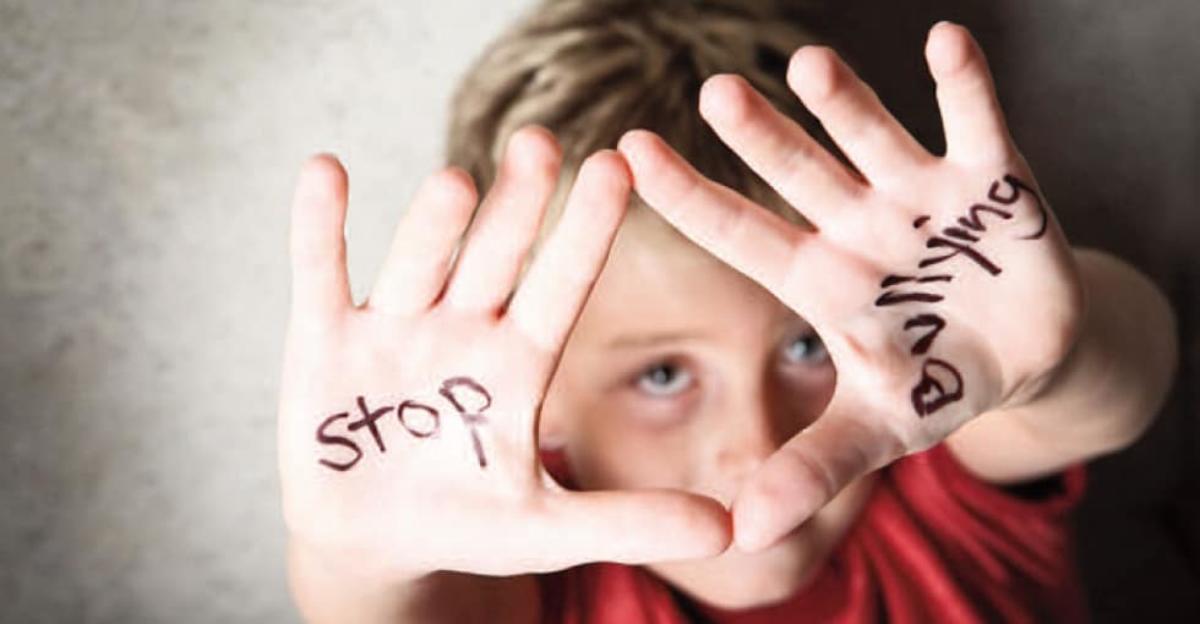Nationwide, more than one quarter of the students in grades 6 through 12 are victims of bullying. News stories about the problem make regular appearances on television and newspaper outlets, sometimes with tragic endings. Bullying has moved from an adolescent rite of passage to a serious obstruction that is affecting the success of our entire education system.To further exacerbate the problem, students who are being bullied are likely to engage in the practice as a coping mechanism when they normally would not have felt the urge.
Bullying tends to have effects such as:
- Inability to concentrate in class
- Higher rates of absenteeism and skipping class
- Lost interest in achievement
- Decrease in achievement
- Increased likelihood of dropping out
- Increased likelihood of school violence
Increased awareness of the problem and the attention it is attracting might lead people to believe that the rate of bullying instances is increasing, when in fact the opposite is true—that awareness might be leading to decreasing bullying rates according to some studies.
Special Needs Bullying
That being said, students with special needs are at a significantlygreater risk of being bullied than their nondisabled peers are.Special needs students are two to three times more likely to beharassed, with 60 percent of students reporting instances.
Disabled students, a section of the student body that already suffersfrom a lack of self-esteem, find themselves fighting an uphillbattle to fit in with their peers. In other words, our students whocan least afford to experience the effects of bullying are more likelyto do so — by a wide margin.
Why Special Needs?
There is no overarching cause for bullying, especially amongspecial needs students. No matter how illogical, anything thatmakes a student stand out from the crowd puts them at increasedrisk. Students with special needs obviously have no shortage oftraits that make them stand out.
Another sad fact is that, while bullying among nondisabled studentstend to be more generalized in nature, the bullying that specialneeds students endure tends to be more focused on the disabilitythat is making their peers take notice.
Perhaps a low tolerance of frustration, such as some studentswith attention deficit or hyperactivity exhibit, can make a studentstand out because of their outbursts and “meltdowns”. Motor difficulties can mean students have trouble performing manual tasks in class, like reading and writing. Not only can this cause the student to fall behind academically, but it also makes them stand out on the playground and in gym classes.
Developmental challenges can cause problemswith concentration to the point where a student canonly focus on one thing at a time, causing them toexperience awkward conversational problems and aninability to keep up in class.Any student with assistive devices for hearing, speech, orvision can feel pressure to resist using their devices due to theunwanted attention they bring.
All of these situations, and more, have the resulting effect ofcausing the student to fall behind their peers in the classroom. Inan age of standardized testing and pacing guides, perhaps thesestudents are bullied simply because they are keeping the rest ofthe class from making the progress necessary to remain on schedule.
Whatever the cause of the bullying, there are steps we can taketo remedy the issue.
What Can Be Done?
Every state in the union other than Montana has enacted lawsthat address bullying in the general student population, with varyingremedies and punishments. There is no overarching federalbullying law, but any school that accepts federal funding musthave an anti-discrimination policy in place. Most try to frame bullyingin a discriminatory light in order for incidents to fall underthose policies.
However, for students with disabilities, the laws are much moreclear. Bullying of a special needs student falls under the definitionof disability harassment, incidents addressed by Section 504 of the1973 Rehabilitation Act and Title II of the 1990 Americans withDisabilities Act.
Simply put, a student with an active 504 or IEP plan that is beingdenied an opportunity at an equal education because of harassmentis protected under these laws. In 2013, the Department of Educationupdated their guidance on bullying of special needs students.
But those are punitive steps to be taken after a bullying incidentoccurs. What steps are being taken to stop bullying, particularly ofspecial needs students, before it starts?
In the case of special needs students, the IEP can be a valuabletool to prevent or decrease the chances of a student being bullied.According to the PACER center, parents, case managers, and teachersof a special needs student should look at writing the followingremedies into the student’s IEP:
- Identify the adult to whom the student can report any instancesof bullying
- Determine the steps school staff will take to record and reportincidents
- Allow the student to leave class early to avoid hallway incidents
- Hold separate in-services for staff and peers that help themunderstand the disability
- Educate peers about special needs bullying and the policies that are in force in the district and school
- Ensure regular assurance from staff addressing the student’srights
- Shadowing of the bullied student by school staff
One of these steps, education of all students about bullying policiesand procedures, is becoming nearly universal in a district’santi-bullying toolkit as part of comprehensive strategies that seekto eliminate the bullying problem.
Overall, these strategies are not one-size-fits-all. Effective antibullyingstrategies must first analyze the specific behaviors currentlytaking place in the school environment, including thosebehaviors that affect special needs students. Only then does acomprehensive strategy seek to implement research-based bestpractices that proactively address bullying among the entire studentbody.
The Role of The Teacher
Teachers are the first line of defense against bullying, especiallyin classrooms where a special needs student has been mainstreamedand is therefore more likely to be bullied. Unfortunately,in some instances, there can be a generational disconnect betweenstudents and adults when it comes to peer harassment.
Some adults still view bullying as a rite of passage. The rationaleseems to be that if they turned out alright despite being bullied,then it doesn’t need to be addressed. That is patently wrong andshould be addressed in any anti-bullying training that takes place.
Even if that isn’t the case, the truth is that what a bullied studentexperiences and what the adult sees is often quite different. Trust,communication, and education can help fill this gap. Most often,for a student to report an incident of bullying they need someonethey trust to go to.
Finally, upon receiving a report or witnessing bullying themselves,teachers need to know exactly what to do. The reporting mechanisms and policies need to be clear to all staff, but particularly the teachers.Although teachers catching bullying in progress might not be a regular occurrence, they should also be trained on what to doin that instance.
Steps For Any Proactive Anti-Bullying Strategy
Part of the special needs anti-bullying guidance released by the Department of Education in 2013 outlines the steps that need to be taken in a comprehensive, effective strategy.
First, the strategy needs to teach appropriate behaviors to students, instruct them on what bullying looks like, and how to respond both as the victim and as a bystander. Special needs students need to be specifically mentioned in any teaching strategies, as these students are becomingmore and more integrated with the mainstream.
This guidance needs to be consistent across the school. You simply cannotexpect students to inherently know what is expected of them without actual direct instruction.
An anti-bullying strategy effectively defines the role of adults and provides guidance for active supervision of the issue. Staff should be expected to model positive behaviors while circulating common areasin which bullying is more likely to occur,such as cafeterias and hallways.
Training and support needs to be an ongoing process. Many schools have ananti-bullying “pep rally” toward the beginning of the school year and leave it at that. Touching base throughout the school year reinforces the importance of the issue.
Policies enacted to address bullying need to be clear, even to young students. Every student in the school needs to know the consequences of bullying, both through inactive approaches like posters and announcements, as well as reinforcement from school staff on a regular basis. Again,bullying of special needs students needs to be explicitly addressed.
Bullying behaviors need to be monitored and tracked so policies and procedures can be amended based on the ever-changing needs of the school and students. This information also needs to be disseminated to all stakeholders as active partners in the anti-bullying campaign.
Parent notification of bullying instances needs to be prompt and clear so they can participate in any remedies that may be required.
Actively addressing any changes in the school’s anti-bullying culture, including any concerns that might come up from involved stakeholders, shows that the strategy is always evolving and ongoing.
Finally, any strategy needs to be given time to show results. In many schools, educational approaches and pedagogical ideas come and go, almost as fads. Stopping bullying is not a fad or a trend. It is an imperativeand should be treated with the appropriate seriousness.
Resources For Students
We’ve discussed the common components of an effective anti-bullying campaign, but what materials are available to aid in the most important aspect of addressing the problem: student awareness?
With the rise in bullying awareness through the media, more emphasis hasbeen placed on materials for student consumption. Videos and curricula are prevalent and can aid staff in tackling the issue with students. Research suggests that you want to build a comprehensive programwith age-appropriate student materials, staff support and family components. A video by itself has short-term impact; consider pairing it with a character education workbook and posters as you start to buildoutyour school’s anti-bullying education.
Tackling the engagement issue is tricky, especially with jaded older students. Dated materials will not connect as effectively asproducts that are more recent. It’s also worthwhile to consider incorporating high interest game and novels that have a positivemessage into your weekly routines.
For younger students, the options are more numerous. Children’s literature has particularly sought to meet the anti-bullying needs of schools and parents. These books have good character developmentlessons woven into engaging plots and stories. Games and other materials are also available.
Finally, many products exist for special needs students that integrate an anti-bullying message into a broader social skills curriculum that is already required in some IEP/504 programs. If your social skills materials do not include anti-bullying components, it’s time to consider updating yourtools.
About The Author
Suzanne Pearson is manager of Market Research and Special Projects at School Specialty. She has taught at the elementary and middle school levels. Her BA in history and education were earned at William Smith College. She has over 25 years experience working in and with schools. In her current role she focuses on product and program implementation and evaluationin schools across North America. Her areas of interest include literacy, engaging students in learning and genealogy.






Leave a Reply